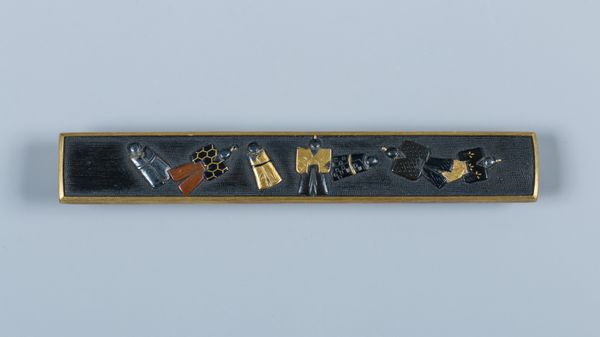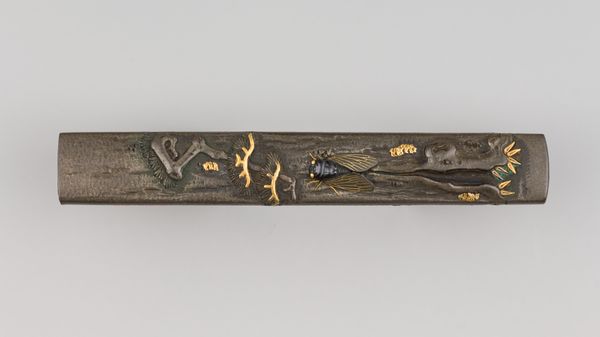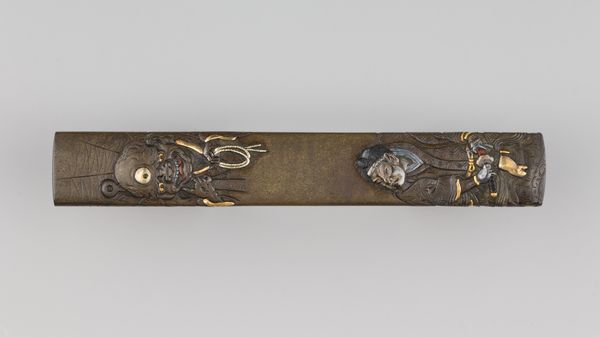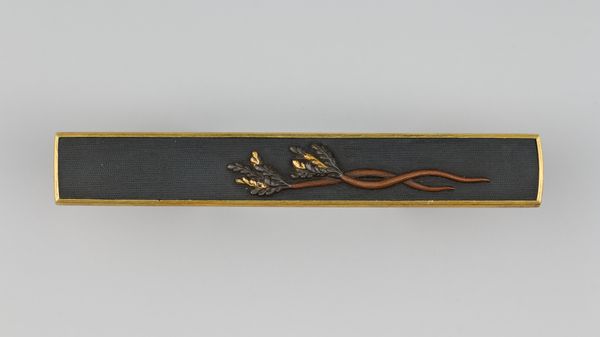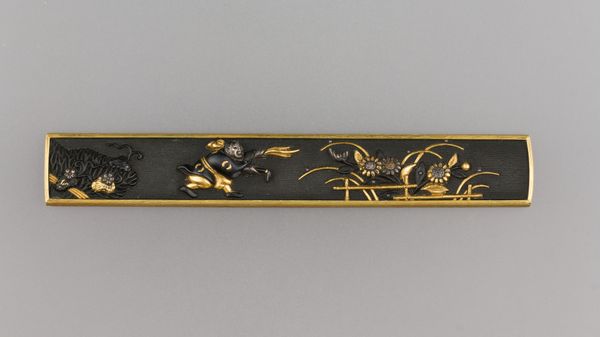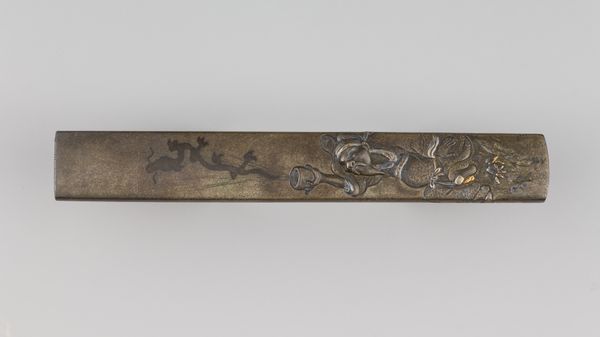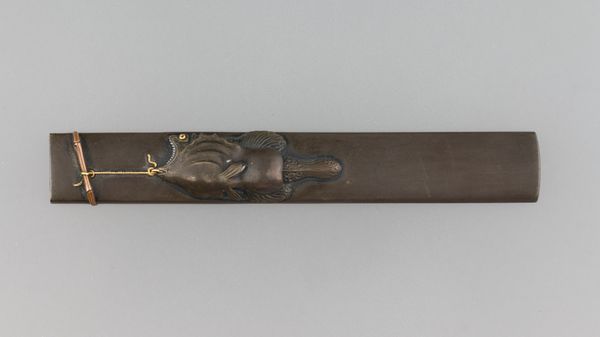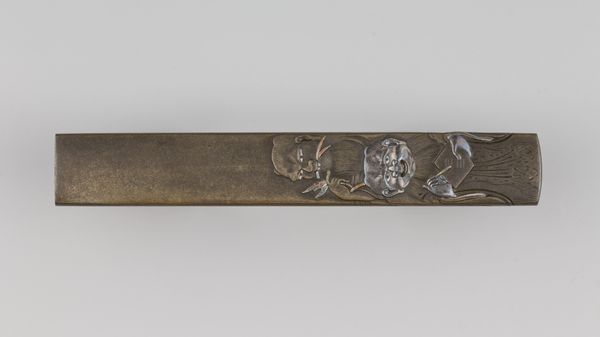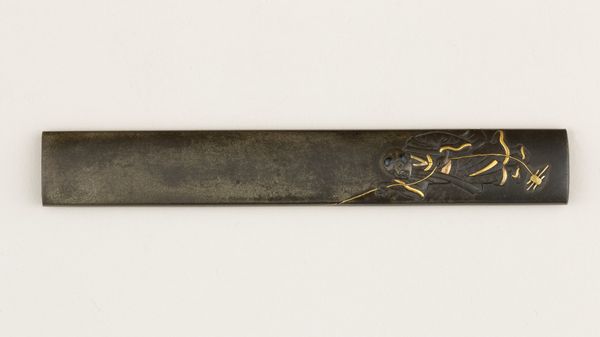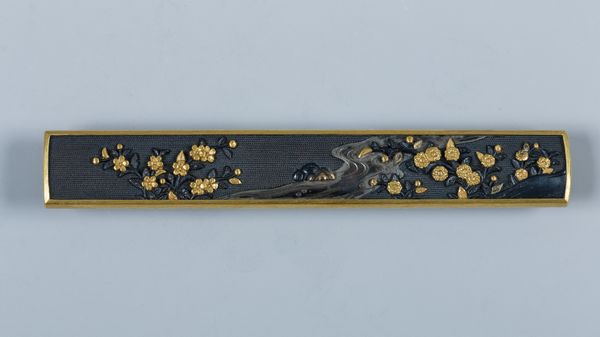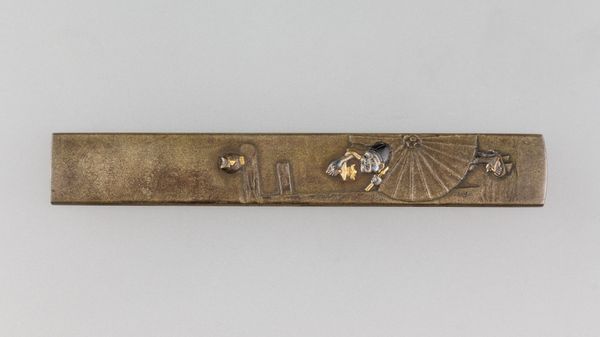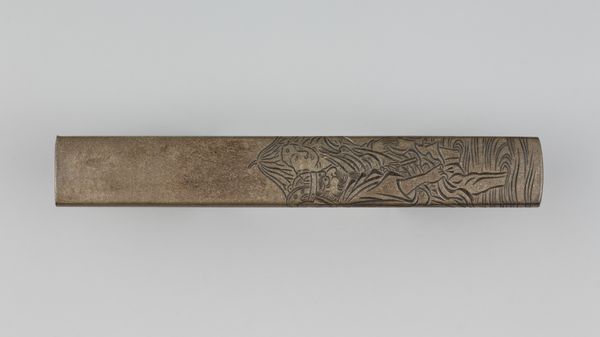
carving, metal, gold, relief
#
carving
#
metal
#
asian-art
#
gold
#
relief
#
japan
#
decorative-art
Dimensions: L. 3 13/16 in. (9.7 cm); W. 9/16 in. (1.4 cm)
Copyright: Public Domain
Editor: Here we have a "Knife Handle (Kozuka)," crafted sometime between 1600 and 1675 by Gotō Kenjō. It's an intricate piece, primarily made of gold and other metals using carving and relief techniques. The composition is very deliberate and balanced. What cultural meanings might be embedded within the motifs? Curator: That's an insightful observation about the composition. Notice how the artist utilizes symbols representing status and power. What reads like a ‘collection’ of objects can be further dissected into its representative power. The war fan, for instance, acted as both defensive implement and instrument for communication. The hat is similarly indicative of its period and class, not merely as a form, but as a signifier of Japanese hierarchy. What emotions are evoked when viewing the careful placement of these articles of war? Editor: That’s fascinating! I didn't realize how directly these objects could speak to status and power. There’s a feeling of reverence here; these objects, although small, feel monumentally important. So the image as a whole conveys an iconographical meaning of status? Curator: Precisely! The objects tell a narrative, creating a sense of permanence that translates across time. Note how these shapes are stylized, reduced into more suggestive than literal portrayals. What would you guess is the emotional significance of ‘miniaturizing’ these large-scale cultural elements? Editor: I suppose making something large, small might show skill, and perhaps contain or tame the raw power of these military associations. I appreciate that looking closer reveals layers of symbolic significance that might have been missed at first glance. Curator: And by understanding the visual language, we are invited into the cultural memory that is unique to Japanese society during the Edo Period. What we see isn’t just a decoration; it's a reflection of a complex social structure through careful symbolism. Editor: This has changed how I view decorative arts; it’s no longer just pretty or skillfully made, but a historical and symbolic artifact. Thank you.
Comments
No comments
Be the first to comment and join the conversation on the ultimate creative platform.
